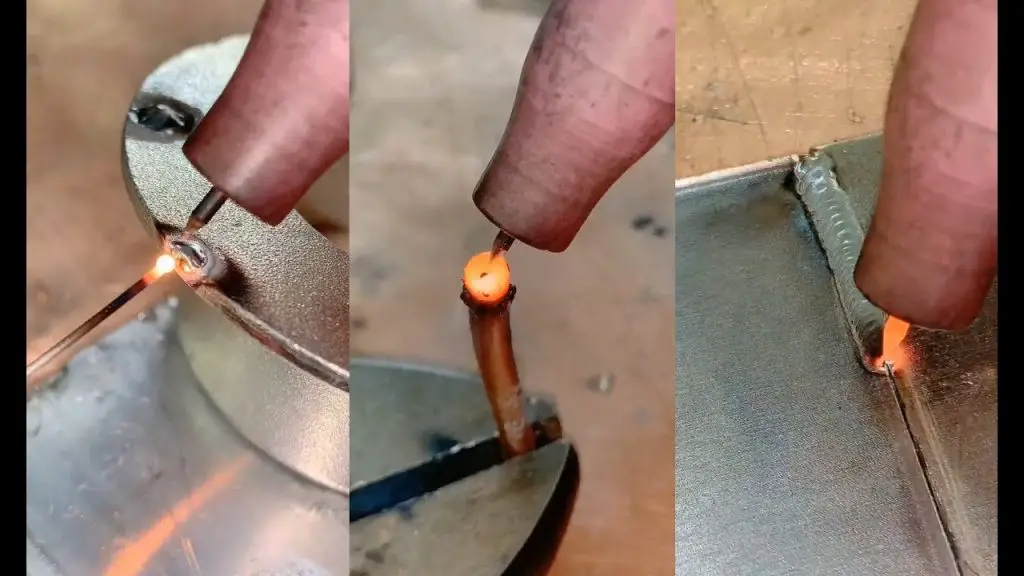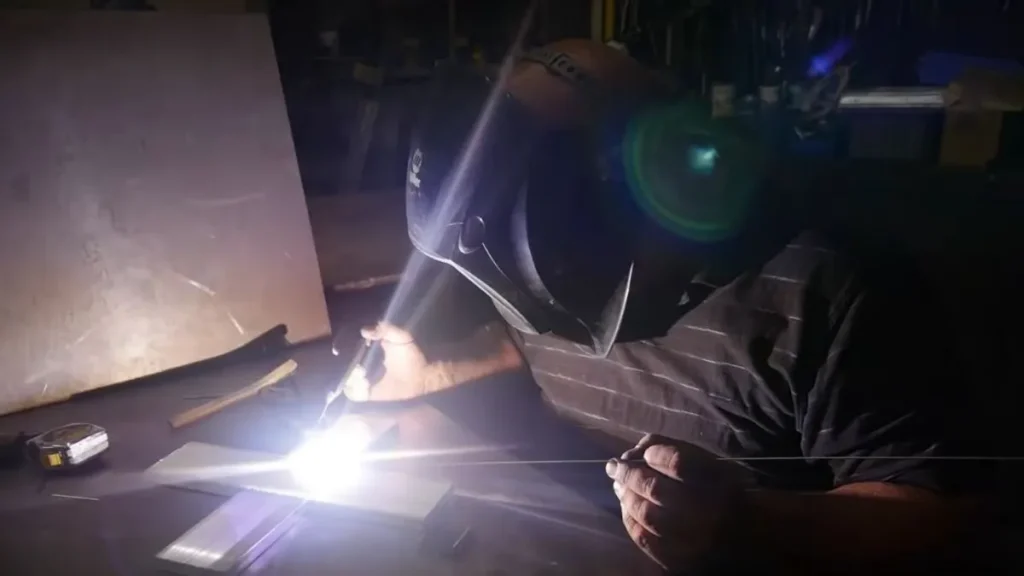If you’ve visited or worked around cars, chances are you’ve seen the abbreviation “CW” (or, improperly, “CWing”) used to refer to a type of exhaust manifold connection. But what does it mean? And why is the process referred to as cold welding versus other forms of metalworking that use heat?
In this post, I’ll explain what cold welding is, an overview of the process itself, its benefits and drawbacks, and list some machines that can perform this process.

Table of Contents
What is the Cold Welding Process?
Cold welding, often referred to as resistance welding or spot welding, is a process in which two metals are joined together by applying pressure with tremendous force and then passing an electric current through the metals. The jolt of electricity causes the materials to join together with incredible strength.
I have written a comprehensive set of instructions explaining how cold welding works if you are looking for more details.
Why do metals stick when cold welding?
Metals stick because of the force applied when pressing materials together. The electric current passing through the metals creates a resistance that heats up the surface of the metals.
This heat causes the atoms on the surface of the metals to move around and form new compounds. These new compounds are incredibly strong and hold the metals together.
How Reliable is Cold Welding?
The cold welding process is incredibly reliable and can create a weld that is as strong as or stronger than a weld created using traditional methods.
In some cases, the weld created by the cold welding process is so strong that it cannot be undone without damaging the materials. This makes it a perfect option for items that need to be permanently joined together.

Where is Cold Welding used?
Cold welding is commonly found in the automotive and oil and gas industries. For example:
Exhaust Manifolds
The connection between the manifold and the cylinder head needs to be strong enough to take heat and pressure from within the engine bay. The heat can cause other types of joins to weaken and fail.
A cylinder head and the exhaust manifold are cold-welded, or resistance spot welded, to form a strong connection that will last for the duration of the vehicle’s lifespan.
Pipes in oil and gas drilling operations
Pipes carry either water or natural gas through an oil rig back to the surface. These pipes come into contact with other objects and materials that can cause them to weaken and eventually fail.
Cold welding pipes help to ensure strong, durable connections that can hold as the pipes are transported through the rig.
Auto parts and large appliances
Almost anything made in an industrial setting can often be found with welds that have been created using the cold welding process.
Different Types of Cold Welding?
There are two main types:
Resistance Spot Welding
We usually think of this type of welding when we hear the term “cold welding.” It involves pressing two pieces of metal together and then passing an electric current through them.
This creates a resistance that heats up the surface of the metals and forms new compounds that hold the metals together.
Resistance Seam Welding
This type of welding is similar to resistance spot welding but is used to seam two pieces of metal together. It is often used in manufacturing large appliances and other items where a strong, durable weld is needed.

Benefits of Cold Welding
There are several benefits such as:
- Incredibly strong welds – Welds created with the cold welding process are incredibly strong. They can withstand a tremendous amount of pressure and heat without weakening.
- No heat required – The process doesn’t require any heat, so it can be done in a variety of settings with little to no preparation.
- Efficient – Welds created with the cold welding process are incredibly efficient. They can be created in seconds rather than hours.
- Very little waste – Since the process doesn’t require heat, very little waste is produced. This makes it an environmentally friendly option for welding metals together.
Cold Welding Drawbacks
There are a few drawbacks about this process as well.
- Inability to weld certain materials – Some materials, such as aluminum, cannot be welded using the cold welding process.
- Welds can be difficult to see – The dark color of some metal alloys and the protective oxide coatings that form naturally on metals can make it difficult to see where a weld has been made. It’s important to inspect welds carefully for any cracks or imperfections.
- Only welds in one direction – Cold welds can only be made one way because the electric current has to travel through both materials for the resistance welding process to work.
Cost of a Cold Welding Machine
A cold welding machine can cost anywhere from $400 to $1,000. Machines that are more expensive will often be simpler and easier to use than those that are less expensive. in addition those that are more expensive will often have a higher output current.
Below you can check slightly cheaper cold welder Andeli TIG-250MPL with an output current up to 170 AMP
In addition, the same brand has the Andeli TIG-250PLS model with an output current up to 200 AMP and a bit more functions to use.
Cold Welding vs TIG Welding
The biggest difference between cold welding and TIG welding is that cold welding doesn’t use any heat. It relies on the resistance created when an electric current passes through two metal alloys.
TIG stands for Tungsten Inert Gas and it uses a welding torch to heat up the metals being welded together. This makes TIG a more efficient option when welding materials that have low melting points.
Can you cold weld with a TIG welder?
The majority of the equipment on the market, like the one indicated above, are TIG welders with Cold welding capabilities. So, when in TIG mode, the machine will make hot TIG welds with filler, but when in Cold Welding mode, the machine will have the features listed above in my post.
Related Questions
Do you Need Gas For Cold Welding?
No, you don’t need gas for cold welding. The process doesn’t require any heat, so it can be done in a variety of settings with little to no preparation. However, some welders use a gas shield to protect the weld from contaminants and help with the welding process.
Is cold welding the same as soldering?
No, they are two different processes. Soldering uses a lower temperature to join metals together, while cold welding uses pressure and an electric current to create a strong joint.
Can cold welding be used on any type of metal?
No, it cannot be used on all types of metals. Resistance spot welds can only join certain types of metals together. It is most commonly used with aluminum and metal alloys.
Is Cold Welding Easy?
Yes, cold welding is easy to use. Machines that are designed for the process are simple and straightforward to operate. Following the manufacturer’s instructions carefully when using a cold welding machine is important.
